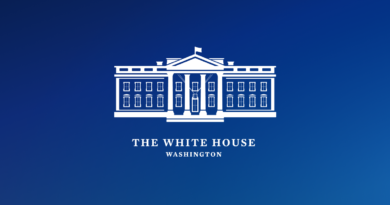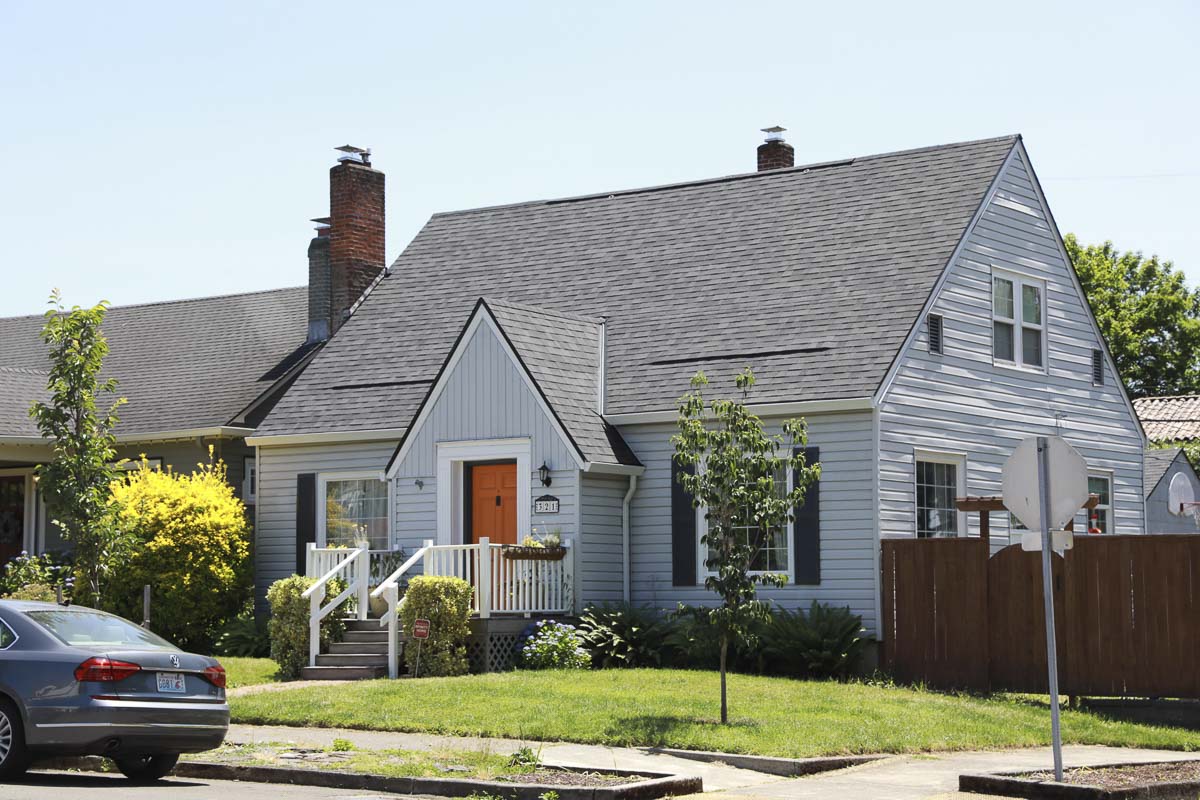FACT SHEET: White House Announces Additional $385 Million to Lower Home Energy Bills for American Families – The White House
Energy Disrupter

Total Low Income Home Energy Assistance Program Funding Reaches Record $8.3 Billion for Hard-Pressed American Families in Fiscal Year 2022
Today, the White House is announcing that the U.S. Department of Health and Human Services (HHS) will release more than $385 million to states to help families and individuals with their home energy costs – including summer cooling – through the Low Income Home Energy Assistance Program (LIHEAP). These funds are in addition to the $4.5 billion that the American Rescue Plan provided to LIHEAP and the first $100 million installment of a five-year, $500 million investment in LIHEAP from President Biden’s Bipartisan Infrastructure Law. Altogether, this year the Biden-Harris Administration is providing more than $8.3 billion in LIHEAP assistance to reduce heating and cooling costs for low-income Americans – the largest investment in a single year since the program was established in 1981.
The President is traveling today to the Pacific Northwest, which saw record heat last year, where he will highlight actions he has taken to help lower costs for families, including home energy costs. These actions include:
Record LIHEAP Funding for States: Today, HHS announced the expected final state-by-state allocation of over $8.3 billion in LIHEAP funding outlined below. For example, Oregon, where the President is traveling today, will receive an additional $3.8 million, bringing the total for Oregon – including American Rescue Plan funds – to $92.6 million in LIHEAP funding. Washington, where the President will travel tomorrow, will receive an additional $6.5 million, bringing its total to $151.2 million.
The American Rescue Plan’s Historic Resources and Relief for Homeowners: The American Rescue Plan provided other critical resources that states and localities can use to address home energy costs. This includes Emergency Rental Assistance (ERA) programs, which received an additional $21.5 billion in funding from the American Rescue Plan, can provide help with past-due utility bills or ongoing assistance with energy costs to help distressed renters avoid shut-offs and keep current on expenses. Over $30 billion of ERA funds have been obligated to assist households with rent and utility costs. The Treasury Department is also working with states and tribes to distribute $9.8 billion in funding for the Homeowners Assistance Fund, with a majority of approved plans including utility assistance to homeowners in need. State and Local Fiscal Recovery Funds can also be deployed to help deliver energy relief to families. Jurisdictions – such as California; Maryland; Louisville, Kentucky; Mesa, Arizona; Burlington, Vermont; and the Menominee Tribe of Wisconsin – are already helping households eliminate unpaid bills, avoid shut-offs, and reduce their energy bills.
The Bipartisan Infrastructure Law’s Historic Investments to Reduce Home Energy Costs: The Bipartisan Infrastructure Law invested a historic $3.5 billion in the Department of Energy’s Weatherization Assistance Program, reducing energy costs for hundreds of thousands of low-income households by increasing their homes’ energy efficiency.
Saving Families Money with Energy Efficiency Standards: The Biden-Harris Administration is continuing a series of 100 actions, to be completed this year, that together will save families $100 every year with more efficient home appliances and equipment. The Department of Energy recently proposed new standards for appliances like air conditioners to help consumers save on their utility bills, which is critical as communities cope with increasingly common and extreme heat events. The Administration will continue taking action to make homes, offices, schools, appliances, and more energy efficient to cut costs for consumers.
Today’s announcement also builds on the Administration’s previous actions to ensure these historic resources are distributed swiftly and equitably:
- Encouraged States to Plan Early: In November 2021, the White House called on states, localities, and tribes to plan early to distribute American Rescue Plan funds to address home energy costs.
- Secured Commitments from Utilities to Avoid Shut-offs and Expedite Aid: The White House has called on utility companies to prevent devastating utility shut-offs and help expedite the delivery of unprecedented federal aid. In January, the White House announced commitments from fourteen major utility companies across the country as well as a delivered fuel trade association.
- Called for Coordination of Home Energy Relief to Families: In November 2021, the White House called for coordination across programs to maximize the impact of home energy assistance. HHS and Treasury issued guidance and co-hosted webinars on LIHEAP and ERA best practices that attracted 500 administrators from across the country. By December 2021, more than half of these administrators reported that they are coordinating across these programs.
- Provided Best Practices on Coordination with Utility Providers: In January, HHS and Treasury hosted a webinar with over 700 utility assistance program administrators and utility providers from across the country to discuss how programs including LIHEAP and ERA can coordinate with utility providers to increase the efficiency and reach of their programs.
- Conducted Outreach and Celebrated National Energy Assistance Day: To celebrate the inaugural National Energy Assistance Day on February 1, HHS released a radio announcement in English and Spanish and a video to encourage families to apply for LIHEAP. The radio announcement aired over 5,000 times and reached more than 80 million listeners. HHS also encouraged LIHEAP Administrators to participate in National Energy Assistance Day. Agencies across the Administration and the White House disseminated information about assistance programs and coordinated outreach.
- Released Brief on Using Pandemic Emergency Assistance Fund for Utility Assistance: The American Rescue Plan provided $1 billion for states, territories and tribes to distribute cash or targeted assistance to needy families. In February, HHS released a brief on how to use these funds for utility needs.
Households in need of help with their energy bills can identify resources in their area at EnergyHelp.us or by calling the National Energy Assistance Referral hotline at 1-866-674-6327.
HHS LIHEAP Funding Awards Available in FY 2022
| State/Territory | Share of $4.5 Billion American Rescue Plan Award | Share of FY 2022 CR Award (November 1, 2021) | Share of FY 2022 Infrastructure Act Award (January 25, 2022) | Share of Over $385 Million Announced Today | Total Share of Record Over $8.3 Billion Available in FY 2022 |
| Alabama | $41,305,882 | $56,406,127 | $2,682,444 | $6,652,710 | $107,047,163 |
| Alaska | $14,390,003 | $10,212,175 | $313,945 | $1,168,240 | $26,084,363 |
| Arizona | $23,569,301 | $26,214,931 | $1,688,238 | $3,539,429 | $55,011,899 |
| Arkansas | $30,164,262 | $29,809,774 | $809,945 | $3,461,419 | $64,245,400 |
| California | $203,610,805 | $179,228,041 | $4,177,848 | $20,649,415 | $407,666,109 |
| Colorado | $71,759,071 | $53,827,678 | $1,545,991 | $6,154,339 | $133,287,079 |
| Connecticut | $94,096,941 | $65,781,175 | $2,003,413 | $7,491,598 | $169,373,127 |
| Delaware | $12,883,578 | $12,188,013 | $355,385 | $1,413,086 | $26,840,062 |
| District of Columbia | $14,560,741 | $10,333,343 | $317,672 | $1,182,101 | $26,393,857 |
| Florida | $80,777,150 | $89,844,309 | $5,785,953 | $12,130,404 | $188,537,816 |
| Georgia | $63,876,744 | $71,046,847 | $4,575,402 | $9,592,448 | $149,091,441 |
| Hawaii | $4,995,879 | $4,719,446 | $166,951 | $547,391 | $10,429,667 |
| Idaho | $26,673,978 | $18,929,763 | $581,945 | $2,165,504 | $48,351,190 |
| Illinois | $252,788,881 | $155,362,999 | $3,175,315 | $17,479,037 | $428,806,232 |
| Indiana | $114,066,354 | $70,324,816 | $1,322,623 | $7,445,267 | $193,159,060 |
| Iowa | $78,507,818 | $49,844,389 | $937,361 | $5,277,033 | $134,566,601 |
| Kansas | $38,821,123 | $33,327,874 | $235,620 | $3,835,029 | $76,219,646 |
| Kentucky | $61,571,174 | $51,647,357 | $1,572,878 | $5,944,024 | $120,735,433 |
| Louisiana | $41,415,195 | $50,324,275 | $1,307,770 | $5,897,192 | $98,944,432 |
| Maine | $55,172,305 | $35,028,740 | $658,740 | $3,708,498 | $94,568,283 |
| Maryland | $73,506,086 | $69,851,450 | $1,505,787 | $8,090,410 | $152,953,733 |
| Massachusetts | $187,074,431 | $120,461,255 | $3,972,082 | $13,640,497 | $325,148,265 |
| Michigan | $238,219,248 | $146,524,948 | $2,749,484 | $15,510,284 | $403,003,964 |
| Minnesota | $167,346,852 | $106,248,039 | $1,998,074 | $11,248,495 | $286,841,460 |
| Mississippi | $33,752,229 | $33,175,153 | $932,139 | $3,851,250 | $71,710,771 |
| Missouri | $103,843,419 | $75,090,936 | $2,284,410 | $8,569,578 | $189,788,343 |
| Montana | $27,134,445 | $19,256,542 | $591,992 | $2,202,887 | $49,185,866 |
| Nebraska | $41,180,965 | $29,208,760 | $898,443 | $3,341,442 | $74,629,610 |
| Nevada | $11,597,336 | $12,899,126 | $830,700 | $1,741,587 | $27,068,749 |
| New Hampshire | $35,498,757 | $25,192,456 | $774,475 | $2,881,938 | $64,347,626 |
| New Jersey | $172,973,948 | $112,665,663 | $3,945,446 | $12,766,391 | $302,351,448 |
| New Mexico | $22,314,041 | $18,984,981 | $0 | $2,145,210 | $43,444,232 |
| New York | $535,676,404 | $340,099,422 | $6,395,824 | $36,006,375 | $918,178,025 |
| North Carolina | $86,970,460 | $96,322,663 | $3,031,982 | $11,251,451 | $197,576,556 |
| North Dakota | $27,147,464 | $19,265,782 | $592,275 | $2,203,944 | $49,209,465 |
| Ohio | $226,879,639 | $140,491,616 | $4,470,005 | $15,847,745 | $387,689,005 |
| Oklahoma | $31,955,095 | $38,316,431 | $872,191 | $4,497,380 | $75,641,097 |
| Oregon | $54,008,001 | $33,704,628 | $1,081,558 | $3,804,103 | $92,598,290 |
| Pennsylvania | $297,671,482 | $182,800,295 | $3,417,885 | $19,353,129 | $503,242,791 |
| Rhode Island | $30,818,515 | $21,871,020 | $672,368 | $2,501,975 | $55,863,878 |
| South Carolina | $35,117,531 | $45,075,688 | $2,923,507 | $6,086,407 | $89,203,133 |
| South Dakota | $24,482,535 | $17,374,556 | $534,136 | $1,987,594 | $44,378,821 |
| Tennessee | $64,310,966 | $66,094,629 | $1,897,763 | $7,692,249 | $139,995,607 |
| Texas | $134,407,308 | $149,494,402 | $9,627,413 | $20,184,105 | $313,713,228 |
| Utah | $32,932,053 | $23,370,940 | $718,478 | $2,673,560 | $59,695,031 |
| Vermont | $26,607,583 | $18,882,643 | $580,497 | $2,160,115 | $48,230,838 |
| Virginia | $90,218,680 | $88,899,724 | $2,833,722 | $10,327,646 | $192,279,772 |
| Washington | $86,208,581 | $57,425,673 | $1,053,477 | $6,499,393 | $151,187,124 |
| West Virginia | $40,464,237 | $28,716,314 | $882,807 | $3,285,056 | $73,348,414 |
| Wisconsin | $150,636,196 | $95,638,491 | $1,798,553 | $10,125,261 | $258,198,501 |
| Wyoming | $12,721,025 | $9,029,982 | $276,494 | $1,032,995 | $23,060,496 |
| Subtotal to States | $4,428,682,697 | $3,316,836,280 | $98,359,406 | $379,244,616 | $8,223,122,999 |
| Subtotal to Tribes/ Tribal Organizations | $48,803,948 | $38,434,012 | $1,132,653 | $4,405,488 | $92,776,101 |
| American Samoa | $372,429 | $278,797 | $8,402 | $31,882 | $691,510 |
| Guam | $816,537 | $611,253 | $18,422 | $69,900 | $1,516,112 |
| Northern Mariana Islands | $283,604 | $212,305 | $6,398 | $24,280 | $526,587 |
| Puerto Rico | $20,268,659 | $15,172,946 | $457,298 | $1,735,097 | $37,634,000 |
| Virgin Islands | $772,126 | $578,007 | $17,421 | $66,097 | $1,433,651 |
| Subtotal to Territories | $22,513,355 | $16,853,308 | $507,941 | $1,927,256 | $41,801,860 |
| Total to All Recipients | $4,500,000,000 | $3,372,123,600 | $100,000,000 | $385,577,360 | $8,357,700,960 |
















